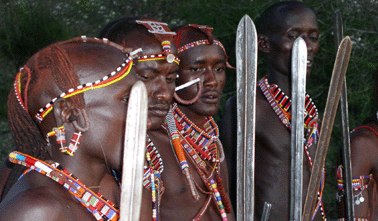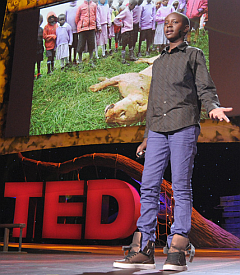This week I heard an inspiring story of applied Improvement Science that has delivered a win-win-win result. Not in a hospital. Not in a factory. In the red-in-tooth-and-claw reality of rural Kenya.
Africa has vast herds of four-hoofed herbivors called zebra and wildebeast who are accompanied by clever and powerful carnivors – called lions. The sun and rain make the grass grow; the herbivors eat the grass and the carnivors eat the herbivors. It is the way of Nature – and has been so for millions of years.
Enter Man a few thousand years ago with his domesticated cattle and the scene is set for conflict. Domestic cattle are easy pickings for a hungry lion. Why spend a lot of energy chasing a lively zebra or wildebeast and run the risk of injury that would spell death-by-starvation? Lions are strong and smart but they do not have a social security system to look after the injured and sick. So why not go for the easier option?
 So Man protects his valuable cattle from hungry lions. And Man is inventive. The cattle need to eat and sleep like the rest of us – so during the day the cattle are guarded by brave Maasai warriors armed with spears; and at night the cattle are herded into acacia thorn-ringed kraals and watched over by the boys of the tribe.
So Man protects his valuable cattle from hungry lions. And Man is inventive. The cattle need to eat and sleep like the rest of us – so during the day the cattle are guarded by brave Maasai warriors armed with spears; and at night the cattle are herded into acacia thorn-ringed kraals and watched over by the boys of the tribe.
The lions come at night. Their sense of smell and sight is much better developed than Man’s.
The boys job is to deter the lions from killing the cattle.
And this conflict has been going on for thousands of years.
So when a hungry lion kills a poorly guarded cow or bull – then Man will get revenge and kill the lion. Everyone loses.
But the application of Improvement Science is changing that ancient conflict. And it was not done by a scientist or an animal welfare evangelist or a trained Improvementologist. It was done by young Maasai boy called Richard Turere.
He describes the why, the what and the how … HERE.
It was noticing that walking about with a torch was a more effective lion deterrent than a fire or a scarecrow.
That was the chance discovery. Chance favours the prepared mind.
So how do we create a prepared mind that is receptive to the hints that chance throws at us?
That is one purpose of learning Improvement Science.
What came after the discovery was not luck … it was design.
Richard used what was to hand to design a solution that achieved the required purpose – an effective lion deterrent – in a way that was also an efficient use of his lifetime.
He had bigger dreams than just protecting his tribe’s cattle. His dream was to fly in one of those silver things that he saw passing high over the savannah every day.
And sitting up every night waving a torch to deter hungry lions from eating his father’s cattle was not going to deliver that dream.
So he had to nail that Niggle before he could achieve his Nice If.
Like many budding inventors and engineers Richard is curious about how things work – and he learned a lot about electronics by dismantling his mother’s radio! It got him into a lot of trouble – but the knowledge and understanding that he gained was put to good use when he designed his “lion lights”.
This true story captures the essence of Improvement Science better than any blog, talk, lecture, course or book could.
That is why it was shared by those who learned of his improvement; then to TED; then to the World; then passed to me and I am passing it on too. It is an inspiring story. It says that anyone can do this sort of thing if they choose to.
And it shows how Improvement Science spreads. Through the grapevine. And understanding how that works is part of the Science.

